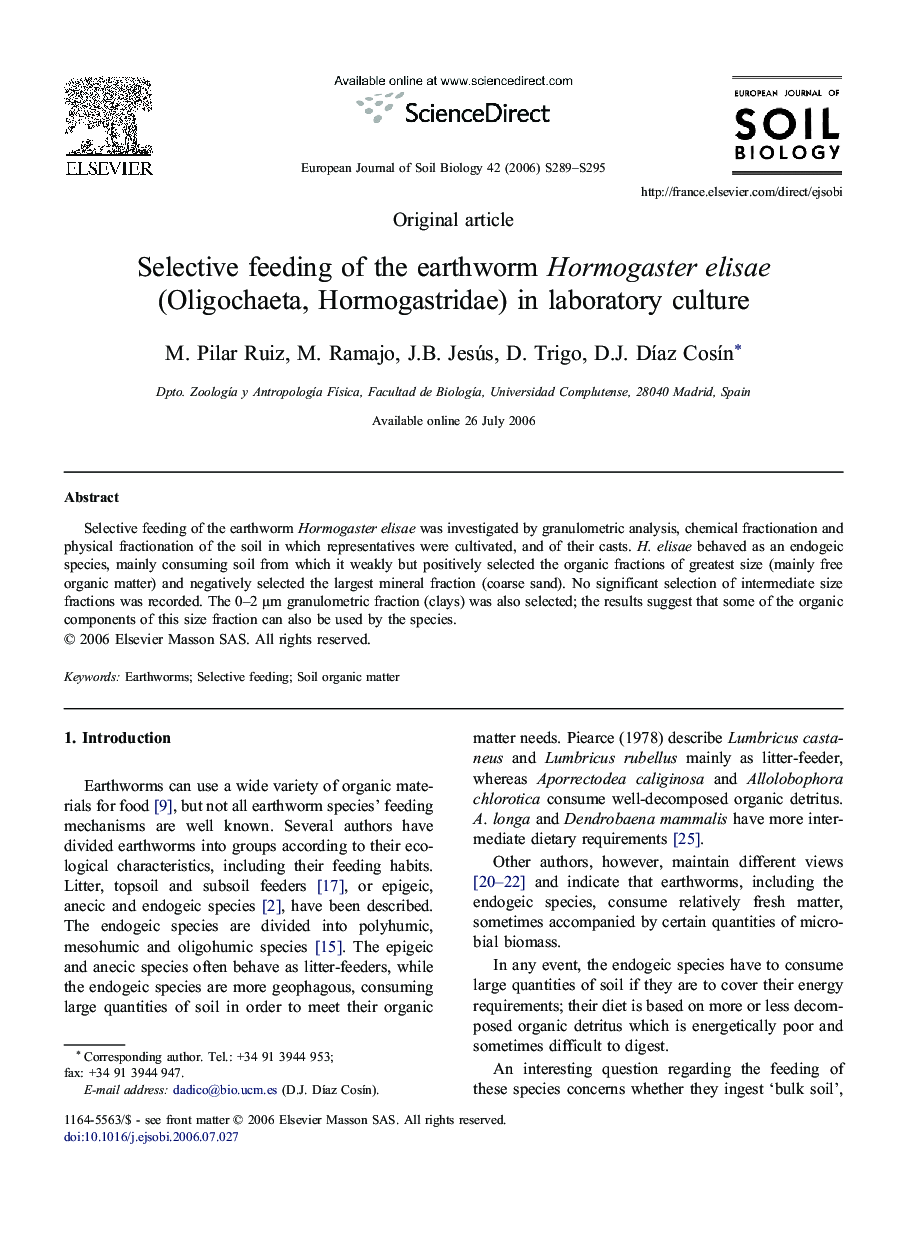| Article ID | Journal | Published Year | Pages | File Type |
|---|---|---|---|---|
| 4392627 | European Journal of Soil Biology | 2006 | 7 Pages |
Abstract
Selective feeding of the earthworm Hormogaster elisae was investigated by granulometric analysis, chemical fractionation and physical fractionation of the soil in which representatives were cultivated, and of their casts. H. elisae behaved as an endogeic species, mainly consuming soil from which it weakly but positively selected the organic fractions of greatest size (mainly free organic matter) and negatively selected the largest mineral fraction (coarse sand). No significant selection of intermediate size fractions was recorded. The 0–2 μm granulometric fraction (clays) was also selected; the results suggest that some of the organic components of this size fraction can also be used by the species.
Related Topics
Life Sciences
Agricultural and Biological Sciences
Soil Science
Authors
M. Pilar Ruiz, M. Ramajo, J.B. Jesús, D. Trigo, D.J. Díaz Cosín,
